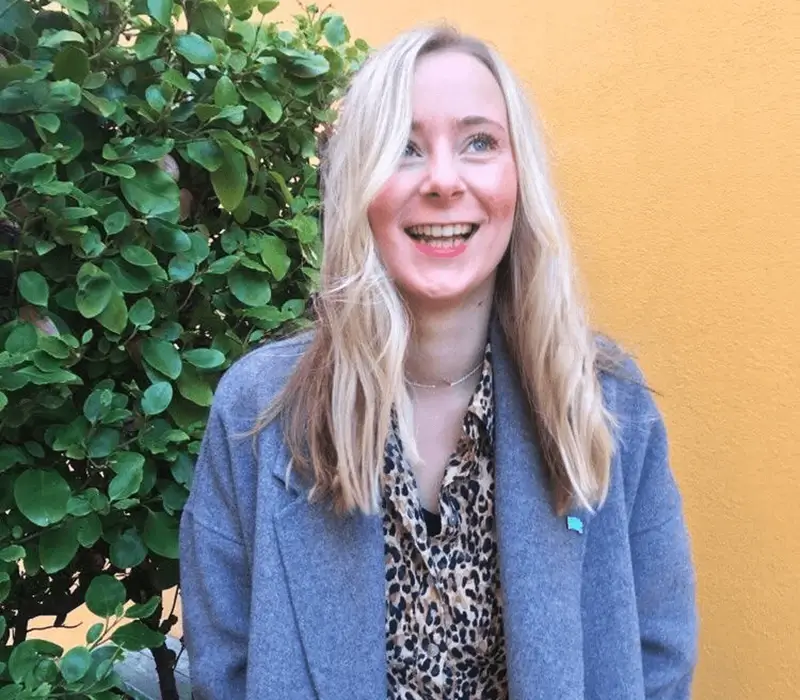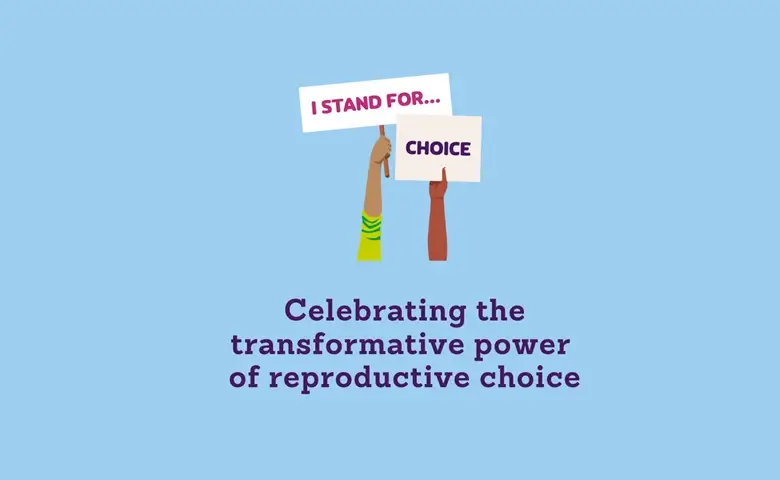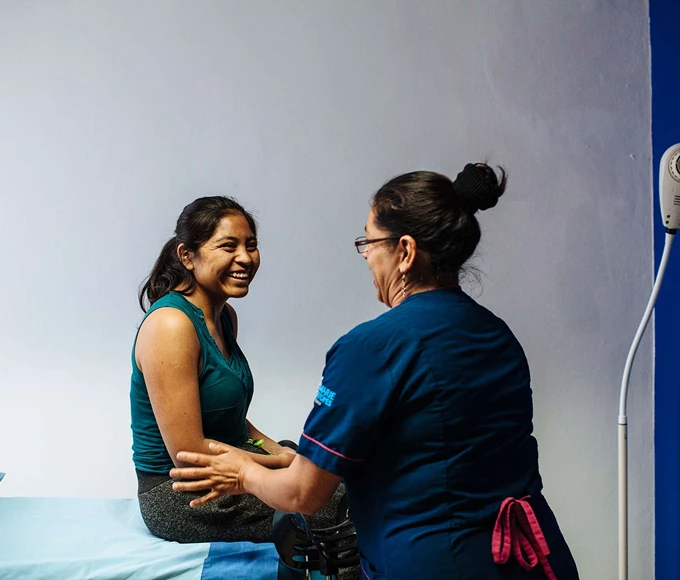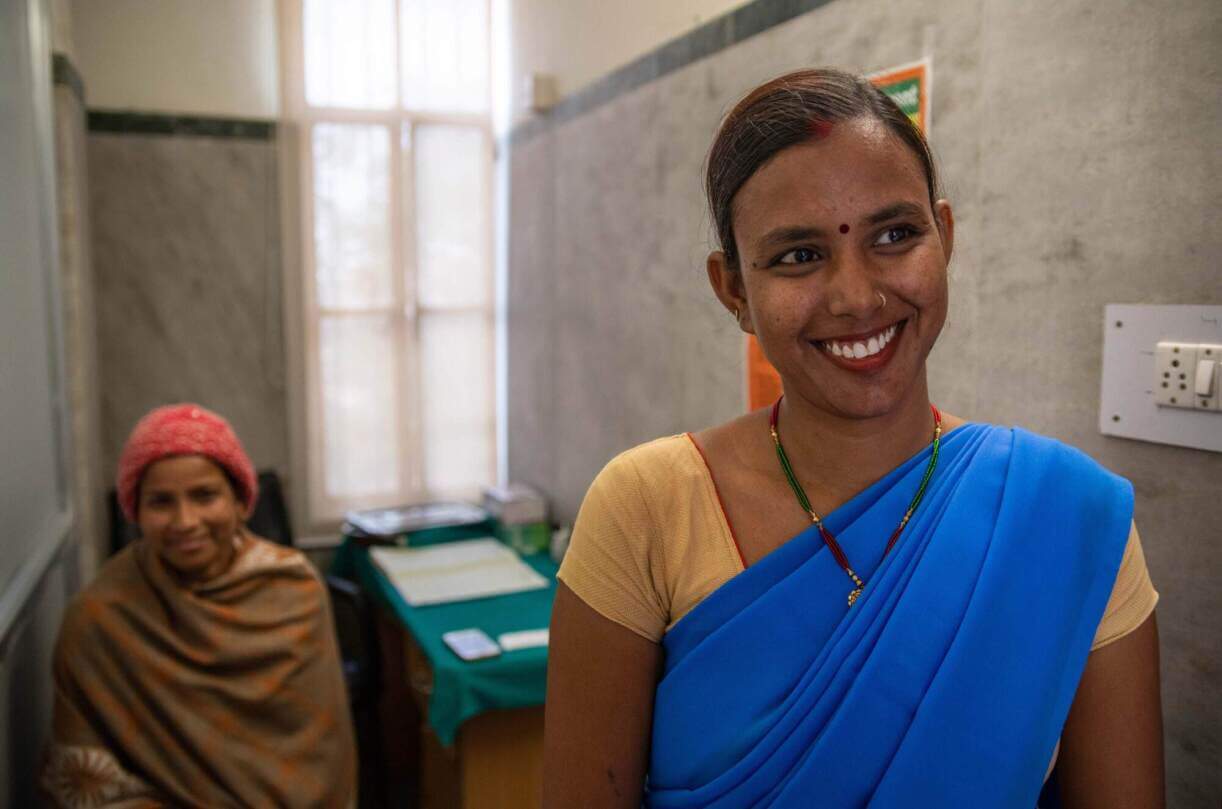
Abortion language guide
Whether you’re a journalist, a content creator, or a pro-choice advocate looking to spread awareness, this guide is designed to help you talk about abortion and help end abortion stigma.
The impact of abortion stigma
Abortion is a safe and common medical procedure and globally, nearly 1 in 3 pregnancies end in abortion. Despite this, abortion care and rights are often shrouded in stigma, shame, and secrecy.
The stigma that surrounds abortion feeds harmful myths and misconceptions which when internalised can negatively impact abortion laws, public health education, and women’s abortion experiences. Ultimately, it makes it harder to access safe abortion care and can even put those seeking abortions and abortion providers at risk of prosecution.
When abortion is restricted, it is marginalised and less-affluent communities that are most affected. These are people who are less likely to have access to private healthcare, or travel to places where abortion care is safe and legal. It is for these people we need to challenge abortion stigma.
We can change this. By talking about abortion accurately through a rights-based framework, we can show that abortion is normal, abortion is healthcare, and that everyone deserves the right to choose. A shift in language and culture can help end unsafe abortion, save lives, and help communities become more informed, autonomous, and empowered.
“Through working with MSI, I’ve learned to combine my journalism skills with the right attitude to ensure that, through my articles, adolescents can be equipped to make healthy and safe decisions.”
MOSES CHIMFWEMBE –
JOURNALIST FOR THE TIMES OF ZAMBIA
Using language to end abortion stigma
The way we talk about abortion matters. By talking about abortion in an accurate and stigma-free way, we can all play a part in supporting access to healthcare and ending abortion stigma.
Inflammatory language and harmful rhetoric around abortion can perpetuate stigma and spread misinformation, which limits access to safe services and reproductive choice.
Sometimes we can stigmatise abortion unintentionally, so to help end abortion stigma, here are some terms you can use and a few abortion messaging dos and don’ts.
…instead of pro-life
Pro-life is a term commonly used by those who oppose abortion. But this label is misleading. A lack of access to abortion can put women’s health and lives at risk. The term anti-choice or anti-abortion is more accurate.
…instead of baby or ‘unborn child’
Using scientifically accurate words greatly reduces the risk of perpetuating stigma. The words embryo (from conception to 8 weeks gestation) and foetus (from 8 weeks gestation) allow us to talk accurately and sensitively about the pregnancy and abortion.
…instead of ‘repeat abortions’ or ‘multiple abortions’
Abortion is a healthcare procedure, there is no shame in choosing to have an abortions, and having more than one abortion is a common occurrence. Using the number of abortions someone has had or the term ‘more than one abortion’ normalises this common reality.
…instead of ‘late term abortion’
While most abortions take place in the first trimester, some will have an abortion in the second and third trimester. Often this is due to delays in accessing abortion care, the woman’s life being at risk or because the foetus would be born with severe abnormalities. Keep it simple by stating the week of gestation or the trimester e.g., abortion at 23 weeks or abortion in the second trimester.
…instead of mother or parent
Being pregnant doesn’t make someone a parent. Like pregnancy, becoming a parent is a choice. By using the appropriate language, we can ensure that everyone can access safe and affirming care.
…instead of illegal
Using the word ‘illegal’ implies that abortion is a criminal behaviour, when it is—or should be—a matter of healthcare, and a choice between of providers and clients. Also, most countries have at least one named circumstance in which it’s legal to access abortion care, so the term ‘illegal’ is often used inaccurately.
…instead of prevent or reduce abortion
Research shows that the number of unintended pregnancies is highest in countries that restrict abortion and lowest in countries where people can access safe abortion. Our collective aim as reproductive rights advocates is to reduce the number of unintended pregnancies (one of many reasons people may seek an abortion) through access to contraception and comprehensive sexual and reproductive health education. Everyone everywhere should have access to abortion care when they need it.
…instead of DIY abortion
With the right support, quality products and access to information on how to take the pills, the self-management of medical abortion is an empowering way to expand access to safe abortion. Anti-choice groups stigmatise this form of care by framing it as dangerous and risky. Terms like DIY abortion support this misinformed view and reduce autonomy and access.
Each of these terms means something slightly different, which is why it’s important to use them in the right context. Not all pregnancies that end with abortion are unwanted or unplanned and not all unplanned pregnancies are unwanted. The right word to use will be specific to each different abortion experience. It’s important to approach abortion with sensitivity as you never know a person’s reasons for choosing to end their pregnancy.
“Looking back, I did feel silenced, simply because it wasn’t something people spoke about. The moment we start to share our stories is the moment society’s attitude starts to shift. That’s why I feel as though I have a duty to share mine.”
– Amy, MSI UK client

Key messages to inspire your content on abortion care
To speak about abortion in a way that’s accurate and destigmatising, here are a few talking points around abortion:
- Abortion is a human right. Forcing someone to carry to term a pregnancy that they didn’t choose, or are unable to continue, is a violation of bodily autonomy and human rights.
- Abortion is an extremely safe and common medical procedure, with nearly 1 in 3 pregnancies ending in abortion worldwide.
- Restricting abortion access doesn’t reduce the number of abortions, it just reduces the number of safe abortions. It forces women and girls to put their health, lives, and futures at risk. On average, abortion rates are similar in countries where abortion is broadly legal and accessible and in countries where it isn’t.
- This year, 35 million women will resort to having an unsafe abortion and over 22,800 of them will die as a result. The World Health Organisation states that nearly every single one of these deaths could be prevented with access to contraception, safe abortion, and comprehensive sexuality education. No one should have to risk their life or health to determine their own future.
- A combination of abortion bans, cultural norms, rising misinformation, and poorly funded services collectively contribute to unsafe abortion rates. To end unsafe abortion for good, we must ensure that safe abortion is supported by policy and grounded in law, and that it’s de-stigmatised, funded, and easy to access.
- Everyone should have the right to access essential reproductive healthcare and to have autonomy over their bodies. Despite the recent overturning of Roe V Wade, which removed the constitutional right to abortion in America, most countries are increasing access to abortion. Progress is winning.
4 tips for content that helps end abortion stigma
Knowledge is power! Talking frankly and factually about abortion helps everyone to understand their rights and access the care they need.
Tip: Share data, information and resources from reputable sources such as:
– health organisations like the World Health Organisation
– reproductive justice organisations like The Guttmacher Institute
– research institutions, universities or professional associations from your own country
– abortion providers like us here at MSI Reproductive Choices
It’s common to frame abortion as an ethical dilemma in content and conversations. However, this detracts from the fact that abortion is a common and necessary form of healthcare, and an established human right. Governments have a duty to ensure that everyone has access to the care they need and want, to best support their health.
Tip: Use rights-based language emphasising abortion and bodily autonomy as a human right and public health-based messaging to highlight the health risks of unsafe abortion. For example, instead of “she had an illegal abortion” you could use “she chose to end her pregnancy, but due to legal restrictions, was forced to resort to an unsafe abortion.”
A picture is worth a thousand words and even more so when it comes to destigmatising abortion. Unfortunately, it’s very common to see images of people crying, pregnant people, foetuses, and babies used in abortion-related content – especially by anti-choice groups who use these emotive images to push their agenda. However, pro-choice journalists and content creators sometimes use these stigmatising images too, unaware of the harm they cause.
Tip: As we do with other forms of healthcare like dentistry, use relevant non-emotive images in your content such as a pregnancy test, abortion pills or a client talking to a healthcare provider, which depict abortion realistically.
By ‘experts’ we mean people who have had abortions, abortion providers and reproductive justice activists. Their personal stories and knowledge are a great source of accurate, evidence-based information and can help people understand the legal and cultural landscape of abortion access. Sharing the abortion stories of those who access and provide care can humanise abortion, reminding others that they’re not alone.
Tip: It’s important to reflect the realities of abortion experiences in a safe and sensitive way. Ensure that anyone you speak to knows exactly how their story will be used and always give them the option to remain anonymous.
Contact our team
Our team are available to advise on how to speak or write about abortion in a way that is accurate and stigma-free.
We have spokespeople from countries spanning six continents available for media comment. We can also help consider style guides to ensure reporting doesn’t represent abortion in an inaccurate or stigmatising way.
If you’re interested in speaking with our media team, please email [email protected] or telephone (+44) 07769 166 516.
If you’re a content creator on social media and you want to connect with MSI about pro-choice content and partnership, feel free to send us a direct message on our social channels or email [email protected].
More resources
Thank you for being invested in using language responsibly. Your words make a big difference in the lives of people who have had or will have an abortion.

Stand for Choice
Join our campaign to Stand for Choice, for example, by sharing your support for reproductive choice on social media.

Explore our abortion services
We’re one of the world’s leading providers of abortion. Find out more about the abortion services MSI provides, including medical, surgical, and post-abortion care.

Read MSI client abortion stories
Every abortion experience is unique and sharing our stories is at the heart of tackling misinformation and helping others feel reassured when accessing abortion services.

Visit our abortion resource hub
SafeAccess shares best practice guidance, news and resources on abortion and post-abortion care, aimed at those providing and advocating for abortion care.





